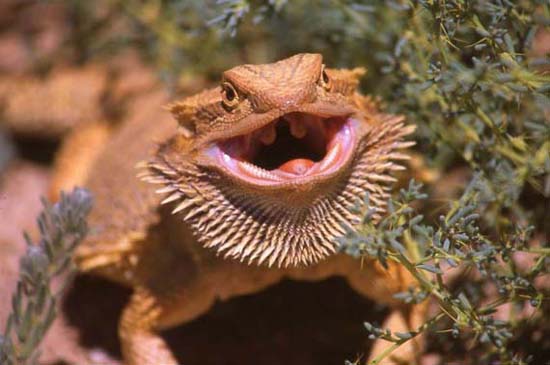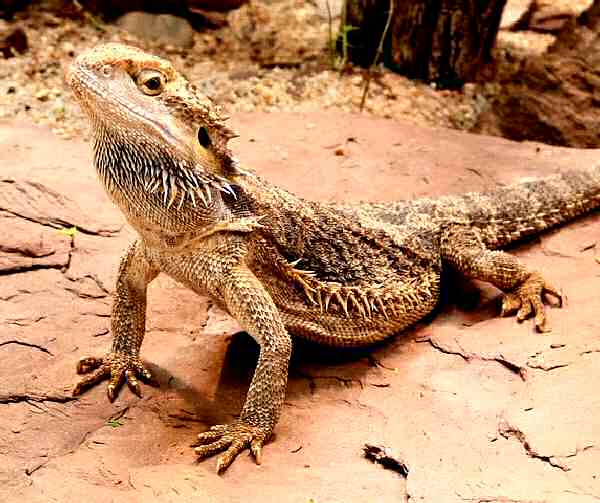Creating the Perfect DIY Bearded Dragon Habitat
Creating the Perfect DIY Bearded Dragon Habitat: A Beginner’s Guide
Bearded dragons are popular pets for a reason. Not only are they adorable, but they are also relatively easy to care for. However, to ensure your bearded dragon leads a happy and healthy life, you need to provide them with the perfect habitat.

Why Build a DIY Bearded Dragon Habitat?
Building a DIY bearded dragon habitat has several benefits. First, it is cost-effective. You can save a significant amount of money by creating your own habitat as opposed to buying a pre-made one. Second, it allows you to customize the habitat to your bearded dragon’s needs. Lastly, building your own habitat is a fun and rewarding project that will deepen your bond with your pet.
Step 1: Choosing the Right Enclosure
The first and most important aspect of building a bearded dragon habitat is choosing the right enclosure. There are several factors to consider when deciding on an enclosure, including size, material, and ventilation.
Size
Bearded dragons are active creatures and require plenty of space to move around. A full-grown bearded dragon needs at least a 40-gallon tank with ample floor space to move around. However, larger enclosures are always better. Keep in mind that bearded dragons grow quickly and will eventually outgrow smaller tanks.
Material
Enclosures are typically made of glass or mesh. Both materials have their advantages and disadvantages, so it ultimately comes down to personal preference. Glass enclosures provide a clear view of your bearded dragon and can retain heat and humidity better. However, they can be heavy and breakable. Mesh enclosures are lightweight and provide better ventilation, but they can be more difficult to regulate temperature and humidity.
Ventilation
Proper ventilation is crucial for your bearded dragon’s health. It helps to maintain the right temperature and humidity levels and prevents respiratory infections. Make sure to choose an enclosure with enough ventilation, or create one yourself by adding vents to the enclosure.
Step 2: Furnishing the Habitat
Now that you have your enclosure, it’s time to add some furnishings to make it feel like home. Here are some essential items to add to your bearded dragon habitat:
Substrate
The substrate is the material that line the bottom of the enclosure. There are several options available, but avoid using loose substrates such as sand or wood chips as they can cause impaction if ingested. Instead, you can use reptile carpet, paper towels, or tile.
Hide Box
Bearded dragons need a place to retreat and feel safe. Provide a hide box, such as a small cardboard box or purpose-built hide, in the warmer end of the habitat.
Basking Spot
Bearded dragons require a basking spot where they can soak up heat and light. Place a basking lamp or ceramic heat emitter at one end of the habitat with a basking rock beneath it.
UVB Lighting
Bearded dragons require UVB lighting to metabolize calcium and maintain healthy bones. Place a UVB light at the opposite end of the enclosure from the basking spot.
Decorations
Add some decorations to the habitat to create a more natural environment. You can add rocks, branches, and plants. Make sure to avoid anything that is sharp or can be swallowed by your bearded dragon.

Step 3: Heating and Lighting
Bearded dragons require a specific temperature and lighting schedule to thrive. Here’s what you need to know:
Daytime Temperature
The basking spot should be kept at around 100 to 110 degrees Fahrenheit, while the cooler end should be around 80 to 85 degrees. Use a digital thermometer to monitor the temperature and adjust the heating accordingly.
Nighttime Temperature
Bearded dragons require a temperature drop at night. Keep the temperature at around 70 to 75 degrees Fahrenheit. Avoid using heat lamps at night as they can disrupt their sleep cycle. Instead, use a ceramic heat emitter or an under-tank heating pad.
Lighting
Bearded dragons require 10 to 12 hours of UVB lighting a day. You can use a fluorescent tube or compact bulb with a 10-14% UVB rating. Replace the bulb every 6 to 12 months, even if it still appears to be working.

Step 4: Maintaining the Habitat
To ensure your bearded dragon’s habitat stays clean and healthy, you need to perform regular maintenance tasks.
Cleaning
Clean the enclosure and furnishings at least once a week. Remove any uneaten food, feces, and shed skin. Disinfect the enclosure, hide box, and decorations with a reptile-safe disinfectant.
Temperature and Humidity
Monitor the temperature and humidity levels daily. Adjust the heating and mist the enclosure to maintain the right levels. Keep a log of the temperatures and humidity levels to ensure consistency.
Feeding
Feed your bearded dragon a diet of live insects such as crickets, mealworms, and dubia roaches. Offer leafy greens and vegetables daily, and limit fruit to once a week. Provide clean, fresh water daily.

Conclusion
Building a DIY bearded dragon habitat is a fun and rewarding project that can save you money while providing your pet with a happy and healthy home. By following these steps and providing the right care, you can ensure your bearded dragon lives a long and happy life.
